 More 2019 Adventures |
Córdoba → Alta Gracia → Patquía 266.6 mi (429.0 km) |
 Next Day |
¡Buen invierno, amigos!
What a strange thing to say at the end of June, right? Well, folks, I am heading to a whole other season across the Equator. My 5-year reciprocity fee to Argentina is still good until next year, so I am on my way to Córdoba to see something truly amazing: another total solar eclipse!
Córdoba isn’t as big of a destination as Buenos Aires for northerners, which I could tell right away from the sleepy airport. Plus, when I went to rent a car, I discovered that they only had manual shift available! This would take some creativity, coordination, and a whole lot of tape and string. Luckily, I brought extra!
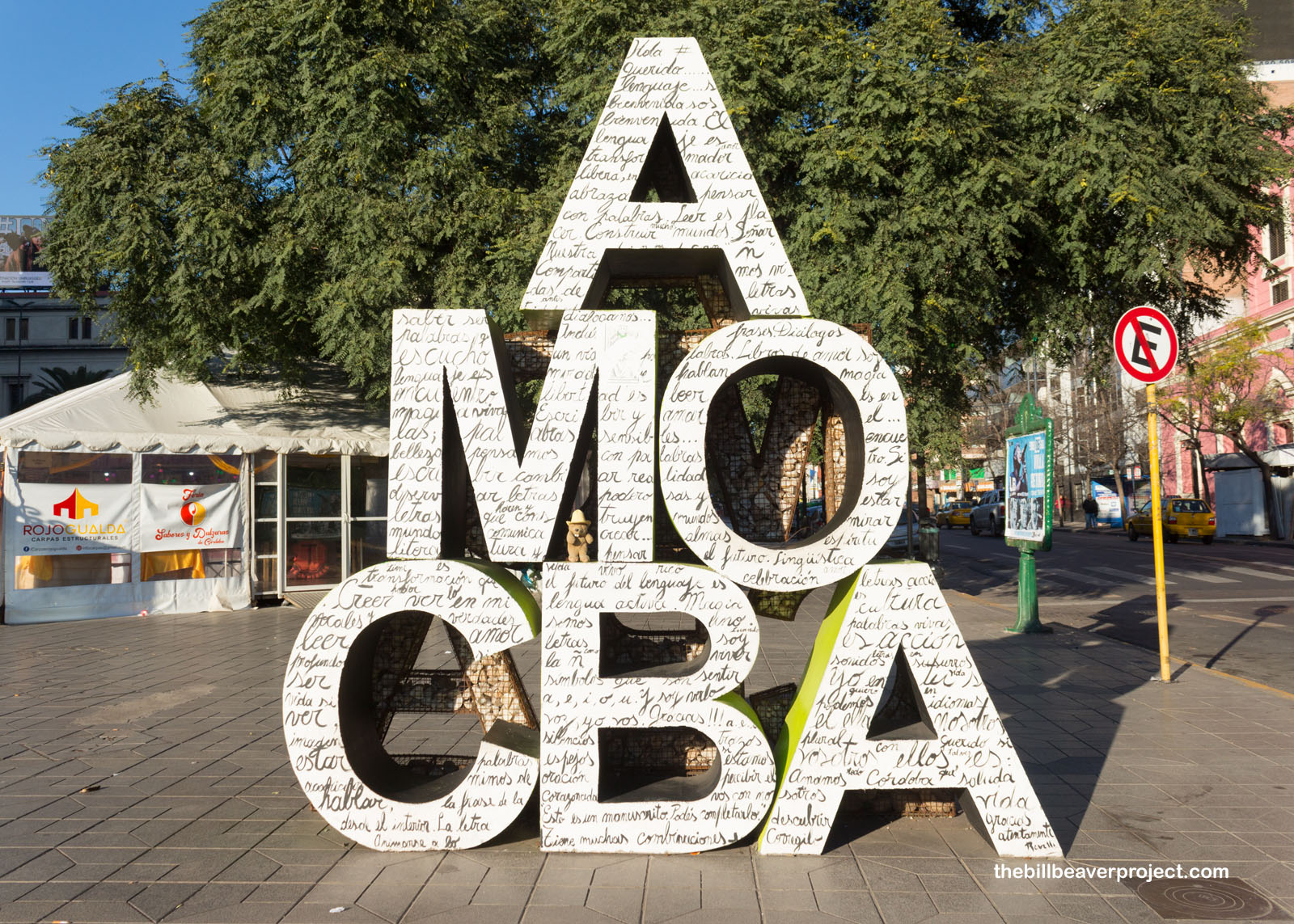 |
The sun brightened up as I arrived in the heart of Córdoba, which was founded in June of 1573 by Jerónimo Luis de Cabrera, the governor of Tucumán, who named it after his wife’s hometown in Spain! Today, it is home to a UNESCO World Heritage Site known as the Manzana Jesuítica, or Jesuit Block!
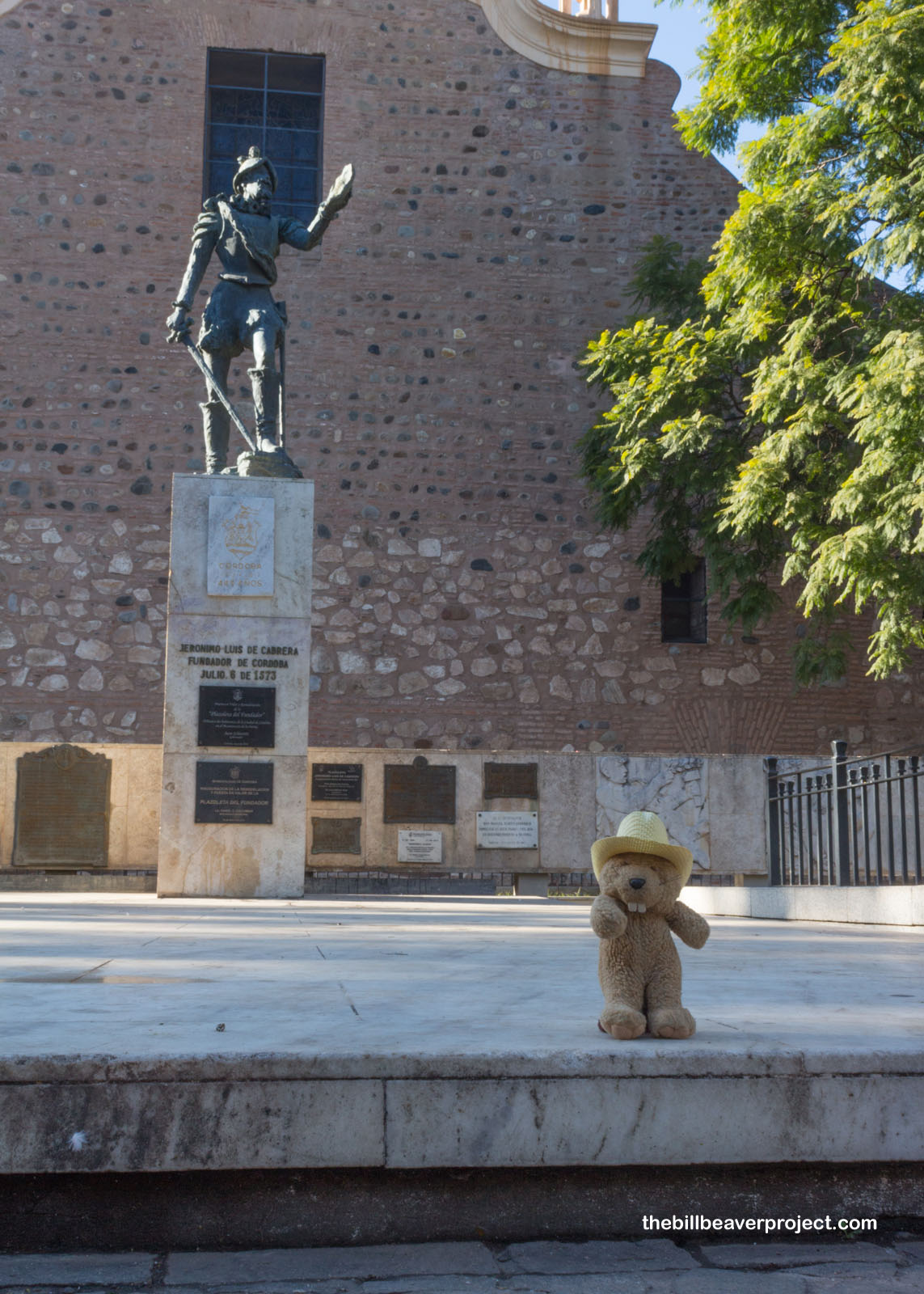 |
The Jesuits arrived in Córdoba in 1599 to spread their religion and teachings to the Hênia and Kamiare, whom the missionaries collectively called Comechingones. Though they quickly wiped out the indigenous language and culture, the missionaries could not eradicate their petroglyphs and contribution to the Cordobés accent!
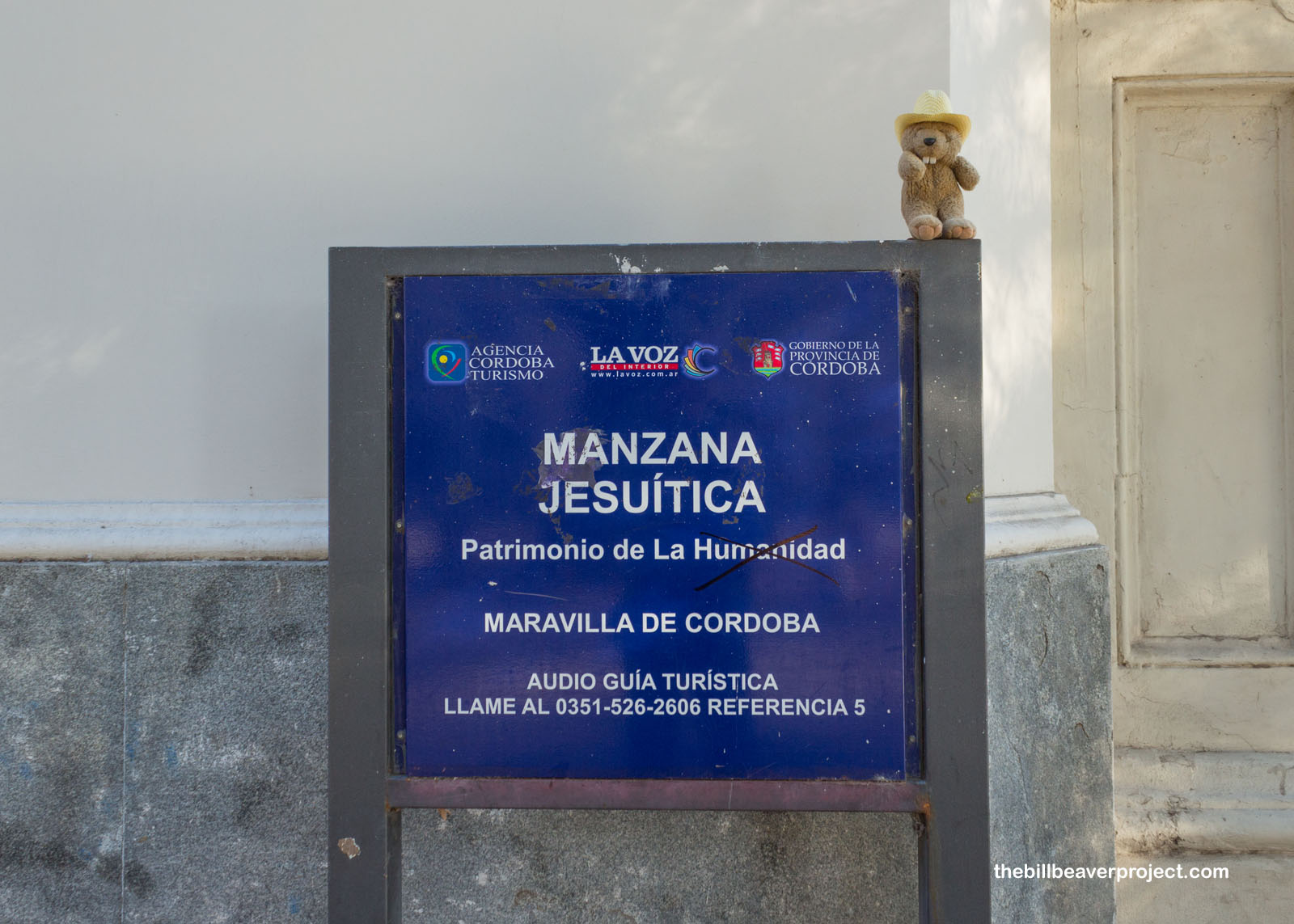 |
Here in Córdoba, the Jesuits, led by Padre Ignacio Duarte Quirós, built Argentina’s first university, called the Royal Boarding School of Our Lady of Monserrat on August 1, 1687! The boarding school system officially started in 1695 and stayed that way through transfer from Jesuit to Franciscan control in 1767 and secularization in 1807! Fifty-one years later, the school was nationalized and changed from a boarding school to a secondary school, which is still active today! Well, technically they weren’t open today because it’s a Sunday and under renovation, but you get the picture!
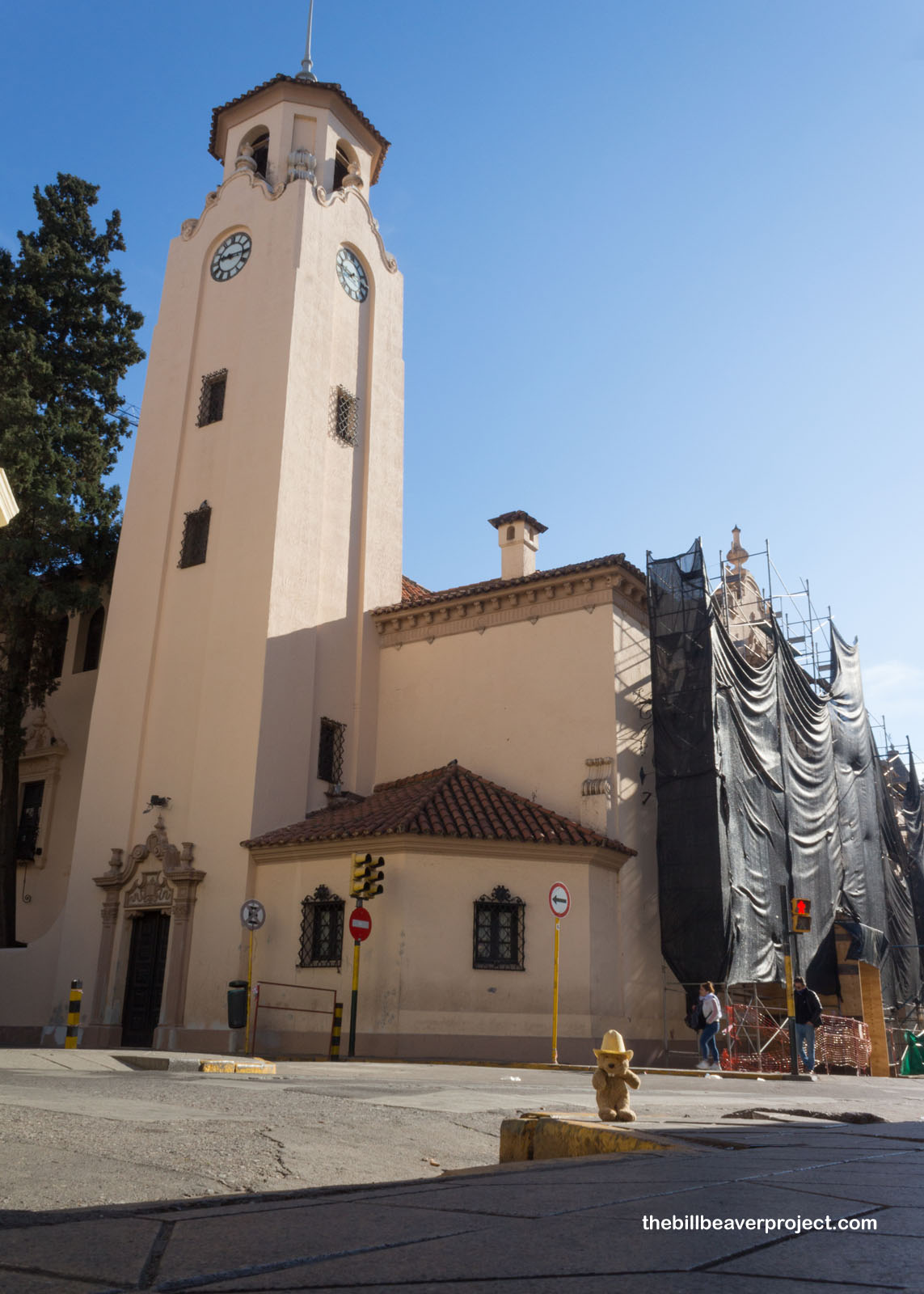 |
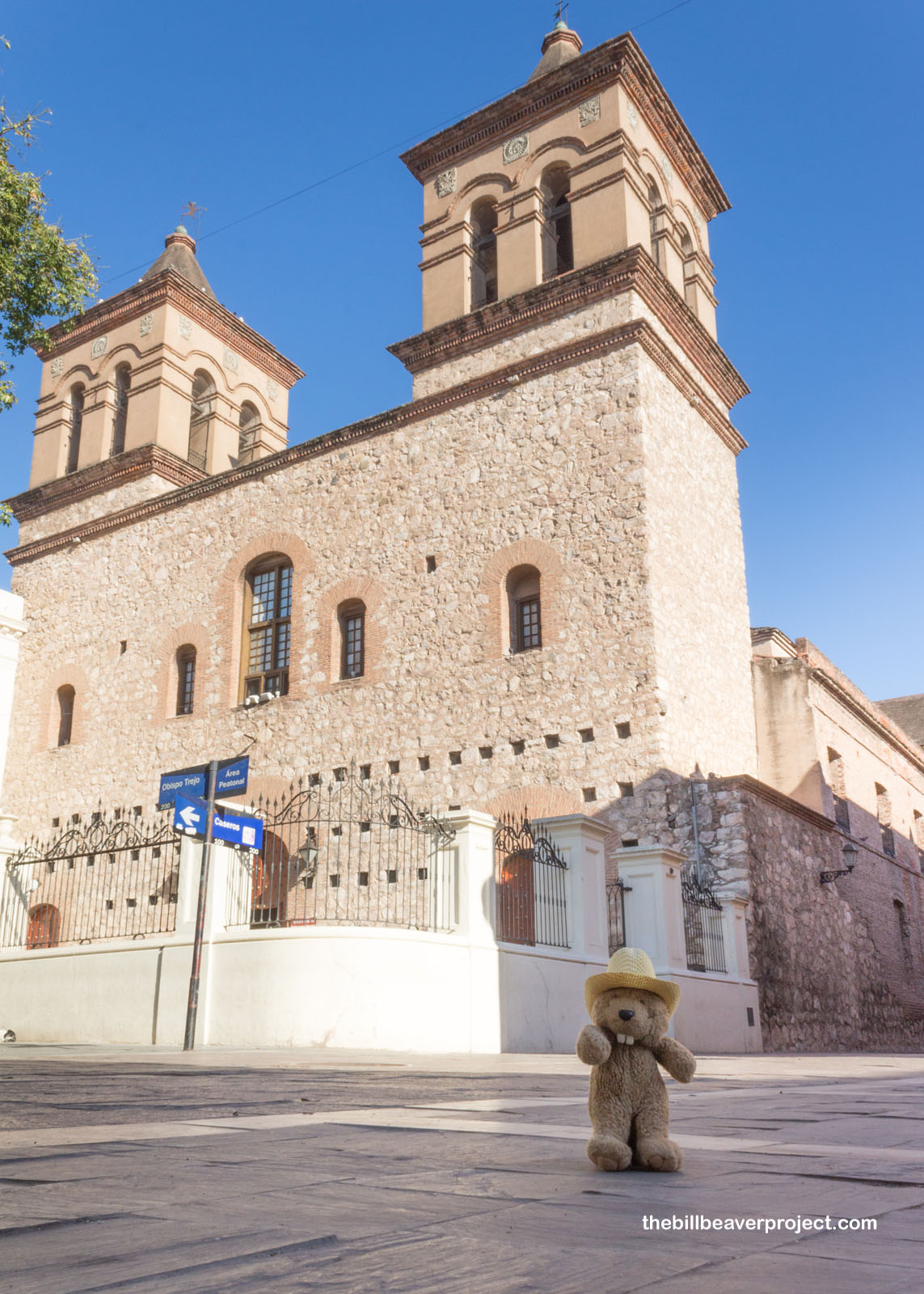 |
Not far from the old college was a grim reminder of a more recent period of Argentina’s history: lines and lines of flags depicting the faces of the desaparecidos. During the Cold War, the US supported a lot of dictators in Central and South America to fend off communism. One of these anti-Communist groups was the Argentine Anticommunist Alliance. Led by General Jorge Rafael Videla, the AAA (not the automotive club) kidnapped and killed between 13,000 and 30,000 people between 1976 and 1983! Their bodies have never been found, as if they’d just disappeared! The chill of this alley wasn’t just from a winter’s morning.
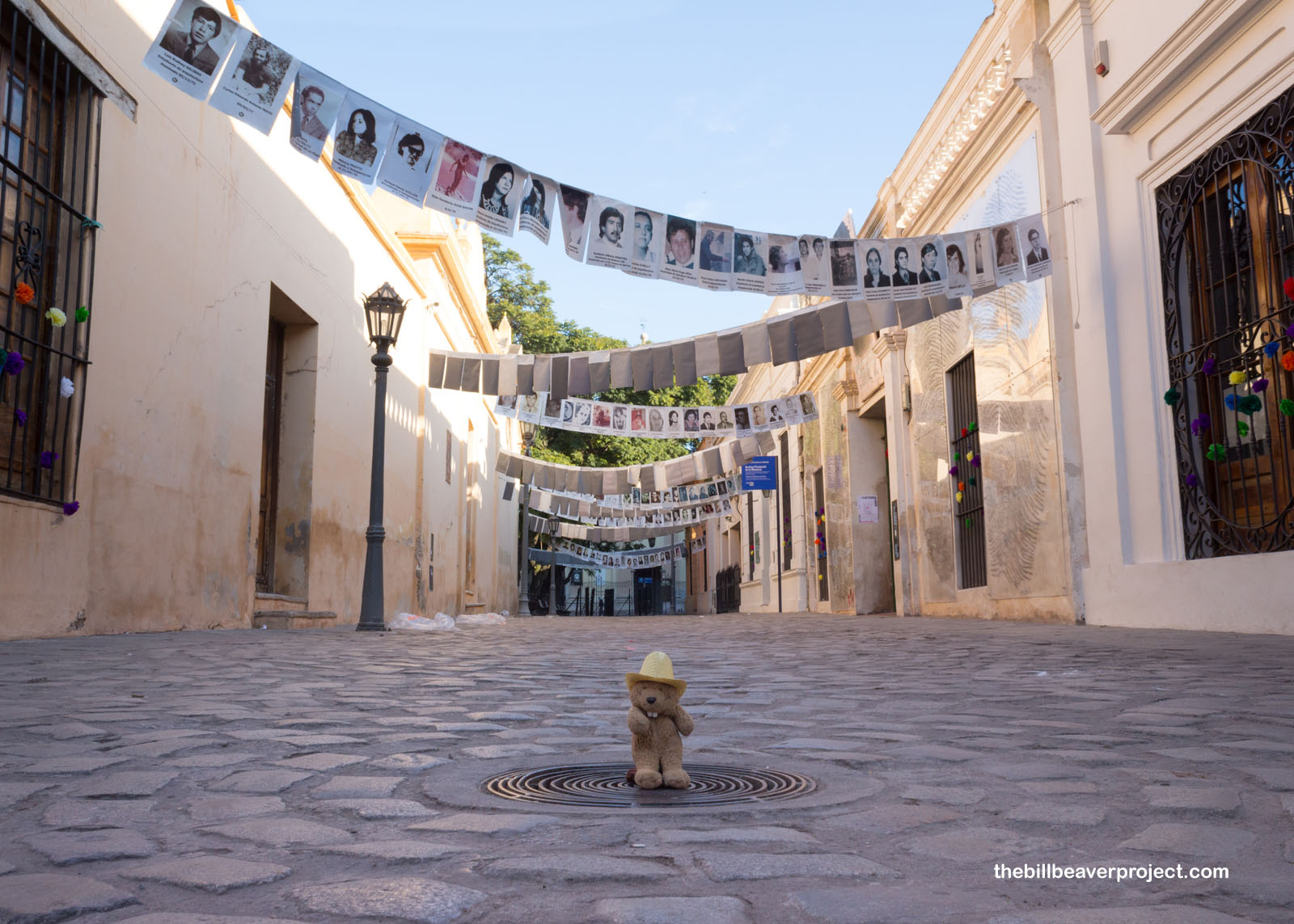 |
I stepped out of the shadow of evil and into the sunlight of the Plaza de San Martín, where I beheld the magnificent Catedral de Nuestra Señora de la Asunción, sometimes just called the Córdoba Cathedral! Like the Colegio, the Cathedral was created by the Jesuits, but after almost a century, much of the original structure collapsed in 1677!
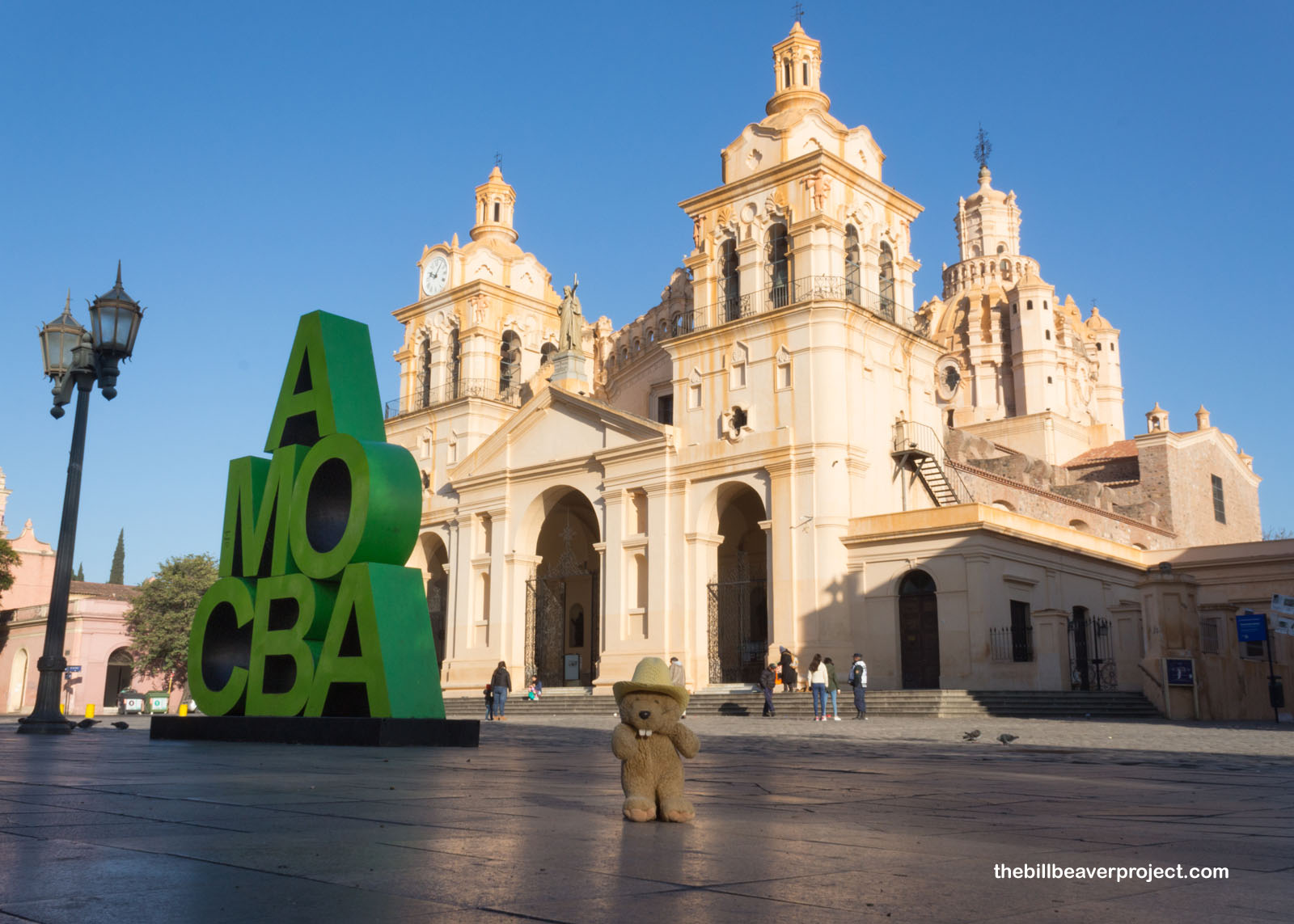 |
With the Jesuits gone, the Franciscans oversaw its reconstruction in a new Spanish Baroque style with new additions added all the way until 1901! Today, it’s the final resting place of revolutionaries, General José María Paz and Deán Gregorio Funes, of Córdoba University’s first rector, Bishop Hernando de Trejo y Sanabria, and the Venerable Friar Mamerto Esquiú, whose incorrupt heart was kept in an urn at Catamarca but later stolen and thrown away by a religious fanatic! As far as I could see, it was also the temporary resting place for many of Córdoba’s perros durmientes!
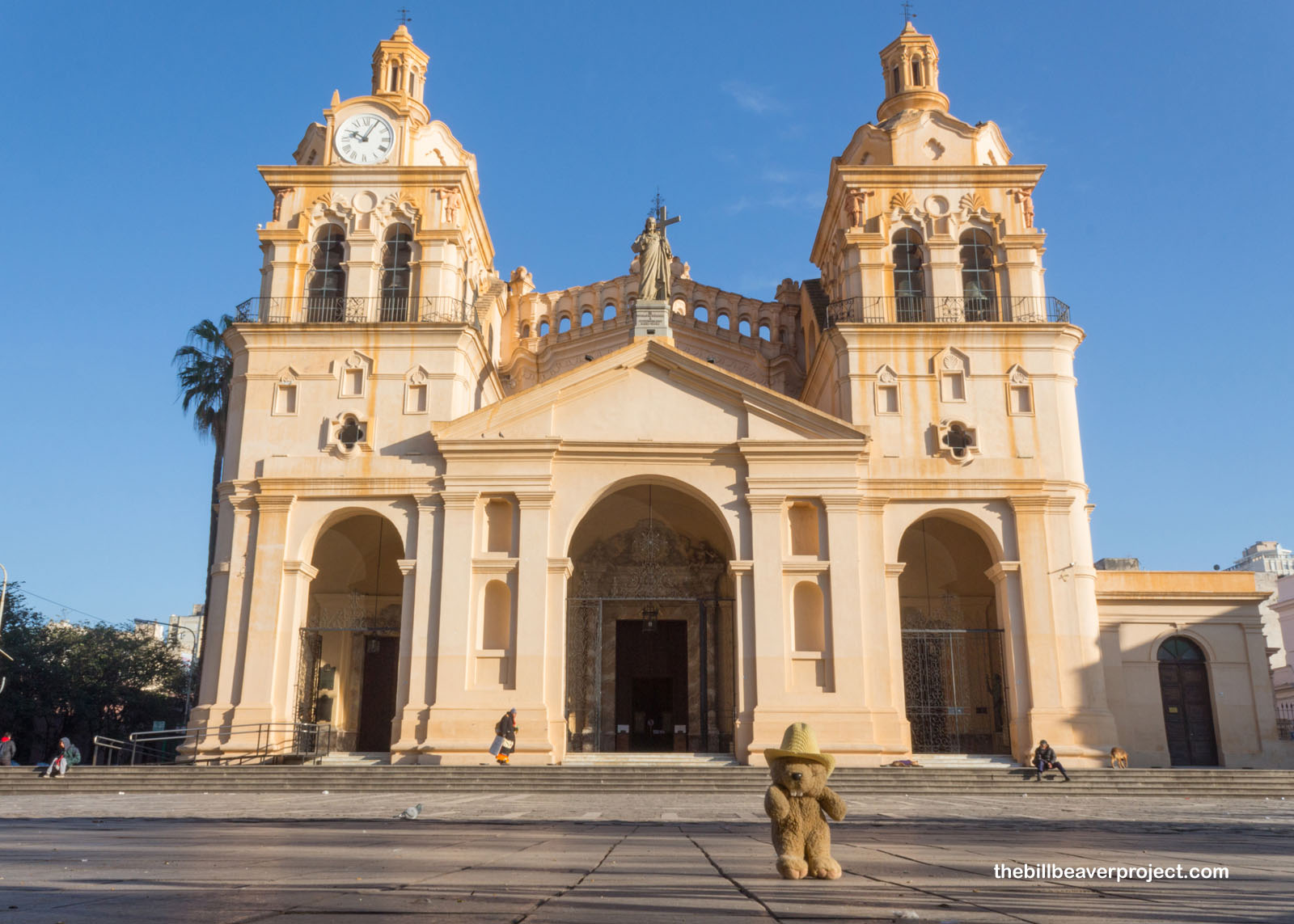 |
Next to the Cathedral stood the Córdoba Cabildo, the third incarnation of the headquarters of Córdoba’s local government! For 15 years after the city’s founding in 1573, the government met in private homes. The first cabildo cabuilt for them was a small adobe in 1588, followed by a larger, wooden one in 1610. There wasn’t enough room in this building, though, so from 1749 to 1786, the grand cabildo we see today came to be! Though the government no longer operates out of this building, today it’s the City Historical Museum and visitor center!
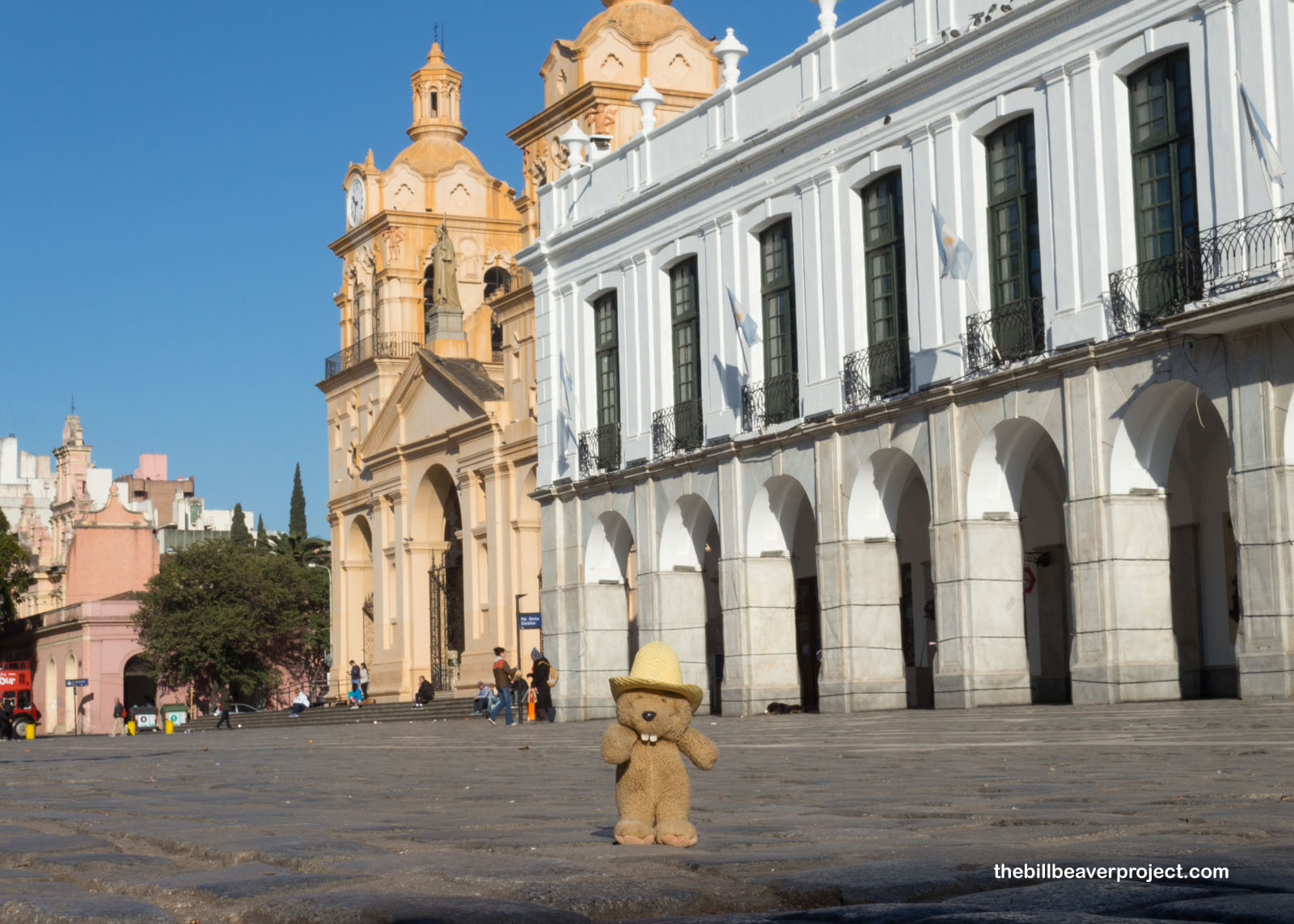 |
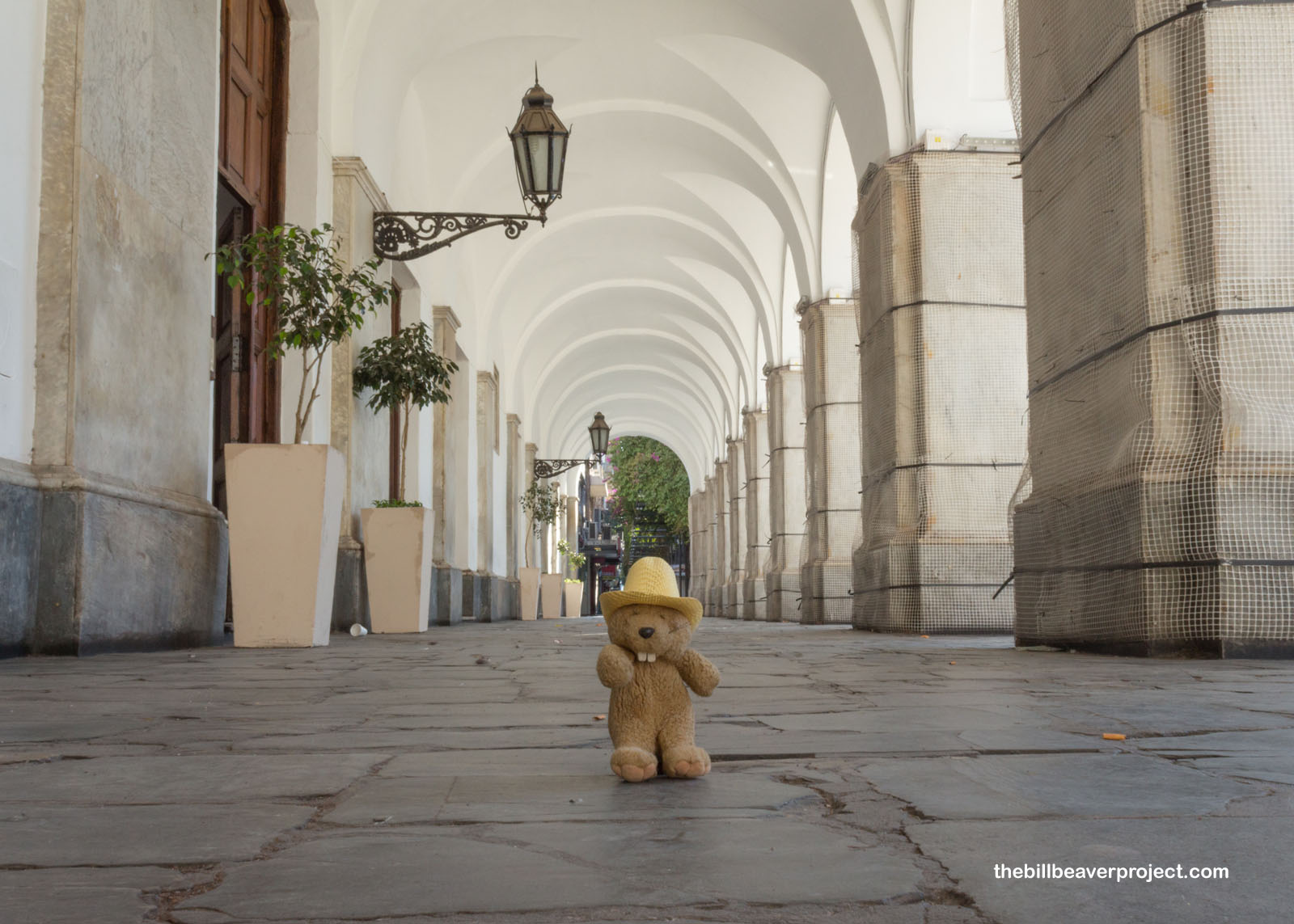 |
Making the third point of a triangle between the cathedral and the cabildo stands a statue honoring José de San Martín, who led the war of independence against Spain for Argentina, Peru, and Bolivia! The statue dates to 1916, but the plaza itself has been here since 1577! On this morning, there was a group of good folks serving breakfast to the homeless in the plaza!
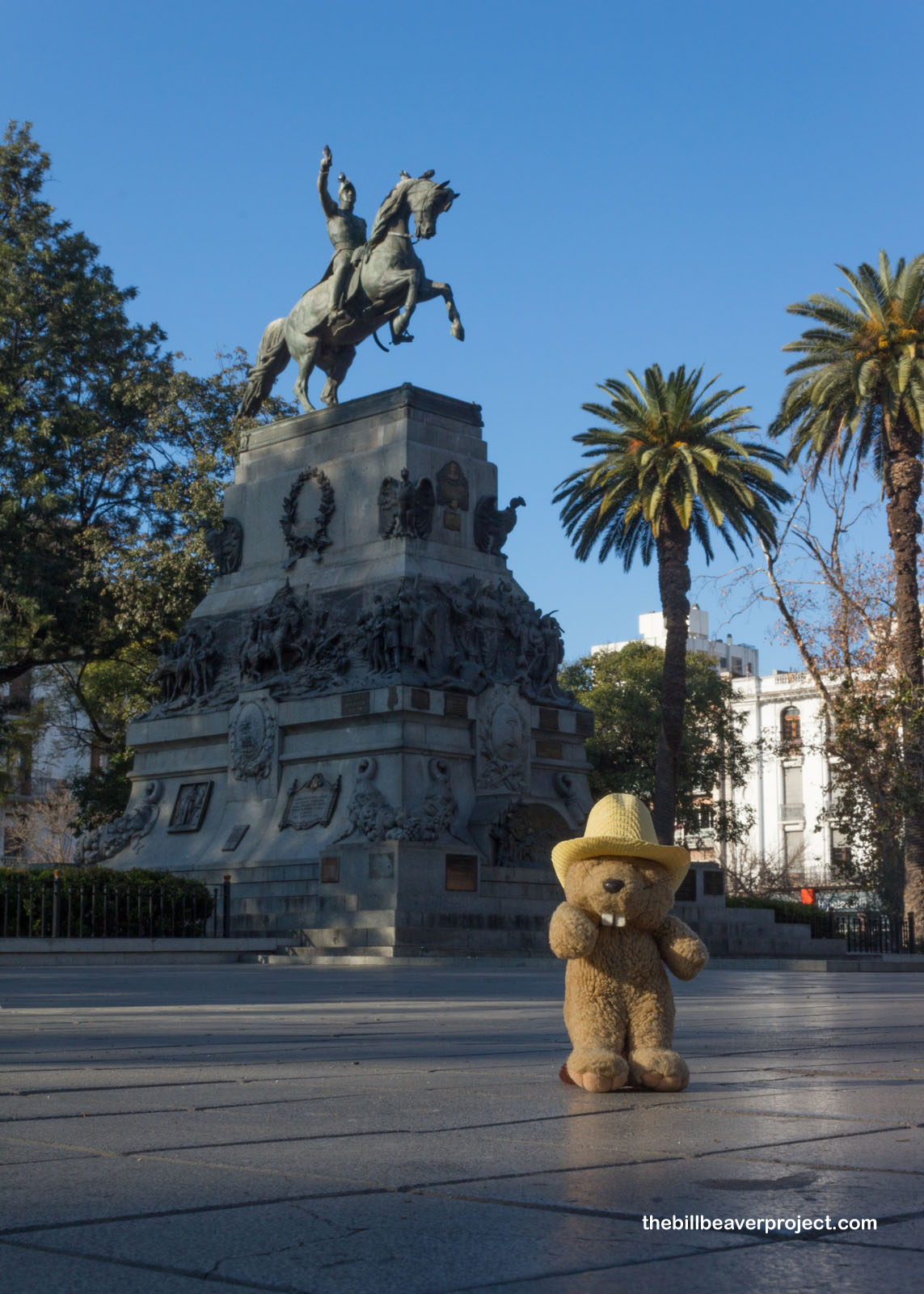 |
From here, I started walking through the streets of Córdoba to a neat park with a mysterious monument, also designed in 1916! In the Parque Sarmiento stands a huge, rusted Ferris Wheel that most folks believe was designed by Gustave Eiffel, famous for his Parisian tower! The peculiar thing about this wheel, which stopped taking passengers in 1938, is that it was built 325 miles to the north in Tucumán, then moved to Córdoba two years later! Now, it’s a really neat addition to the city skyline from a park where runners did stair repetitions and poets relaxed with their journals!
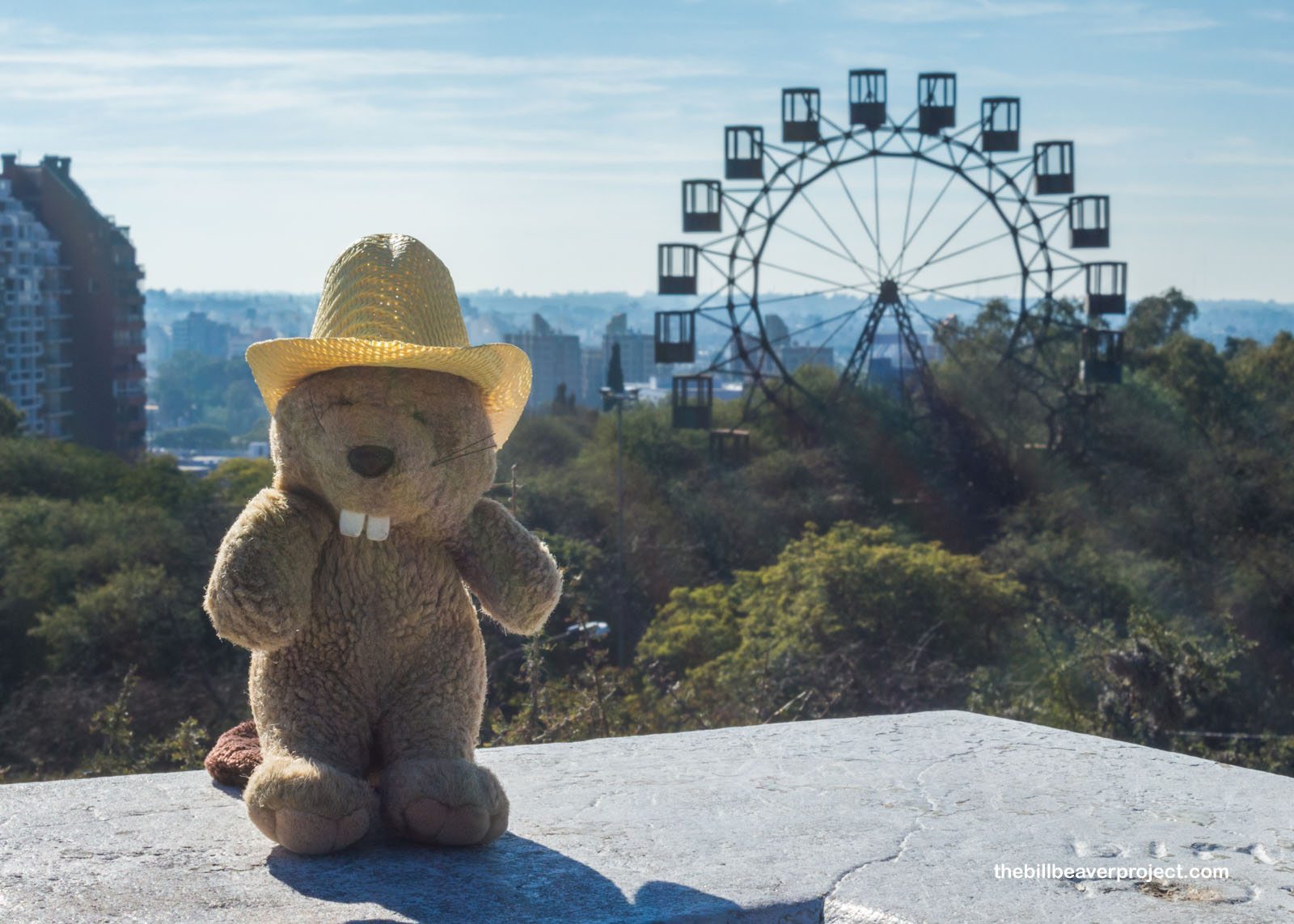 |
But my tummy was rumbling, so I didn’t have time to dream or run the stairs. Instead, I headed across the street to a tiny empanada shop called El Hornito Santiagueño for some perfectly sized, perfectly delicious Argentinian specialties filled with a type of sweet squash called cayote! Yum!
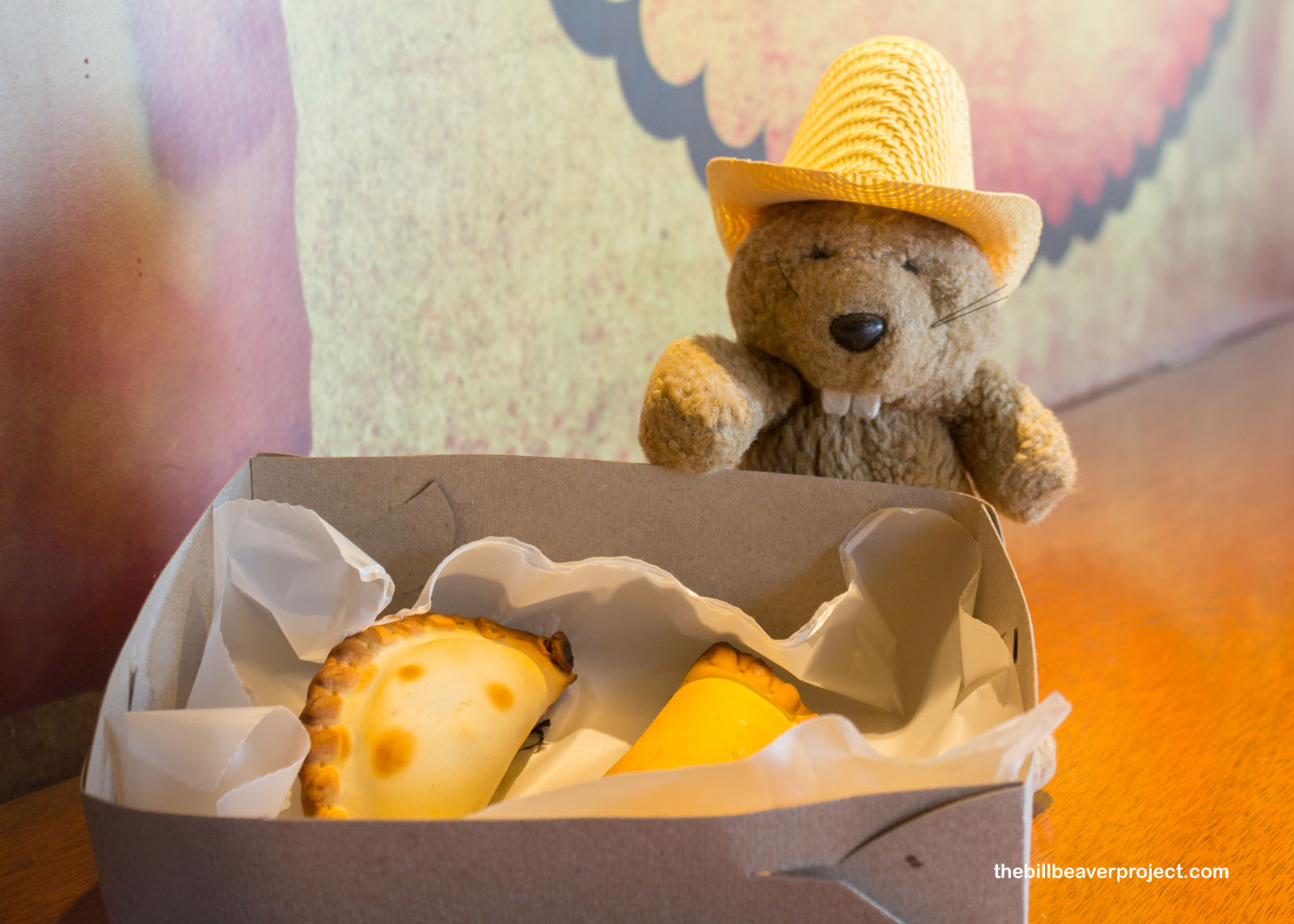 |
Now fully stuffed, I hit the toll road south out of Córdoba to Alta Gracia, home to another part of the UNESCO-recognized center of Argentina’s Jesuit activity: the estancias!
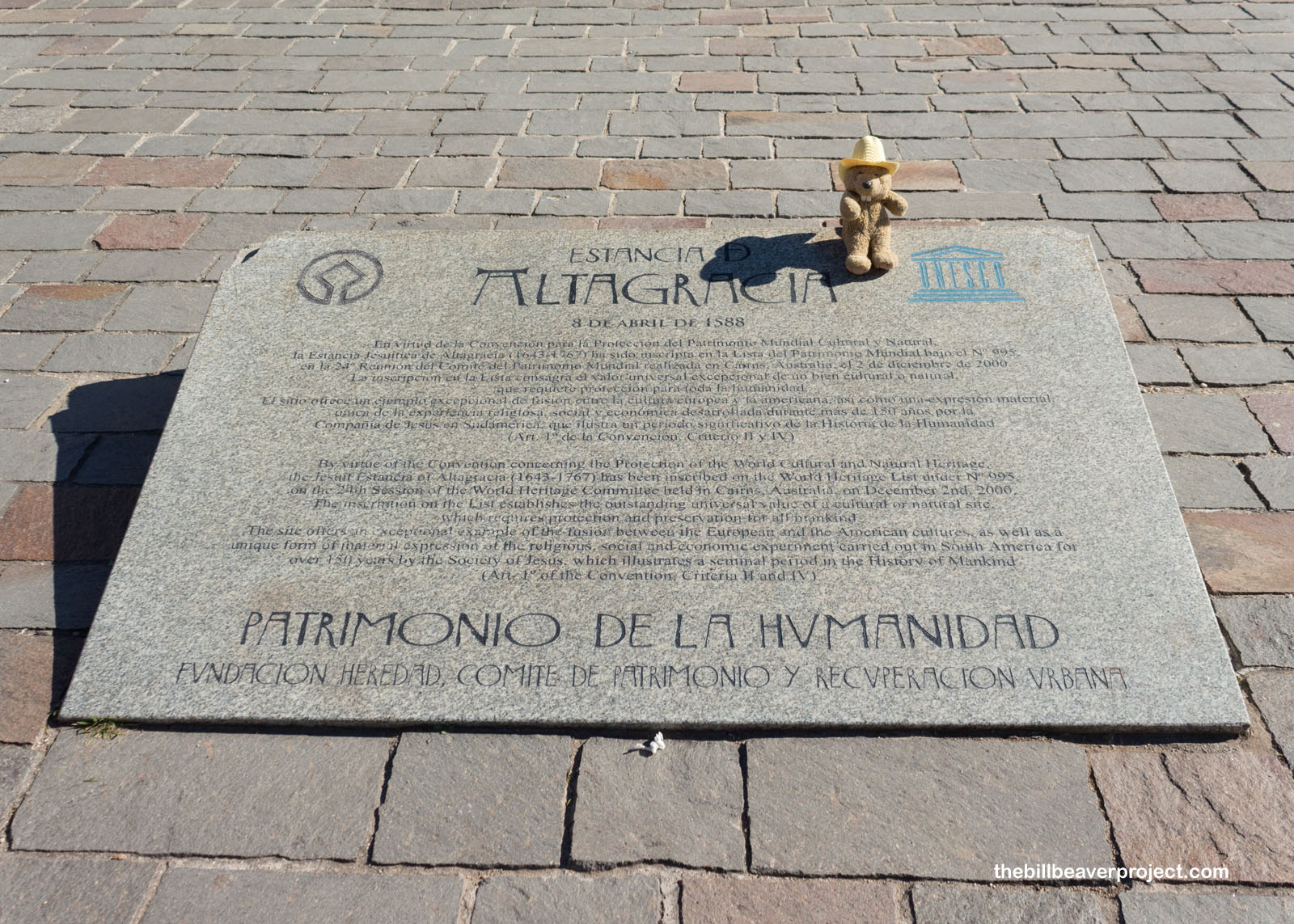 |
Parking here was a risky venture, since most of the streets had special permit requirements, but I had just enough time to hop out and take a spin around the Estancia Alta Gracia, one of five such Jesuit-led estancias, which supplied the farming and manufacturing products for the city of Córdoba! Much like California’s 21 Missions, these estancias used both indigenous and African slave labor to reach their production goals.
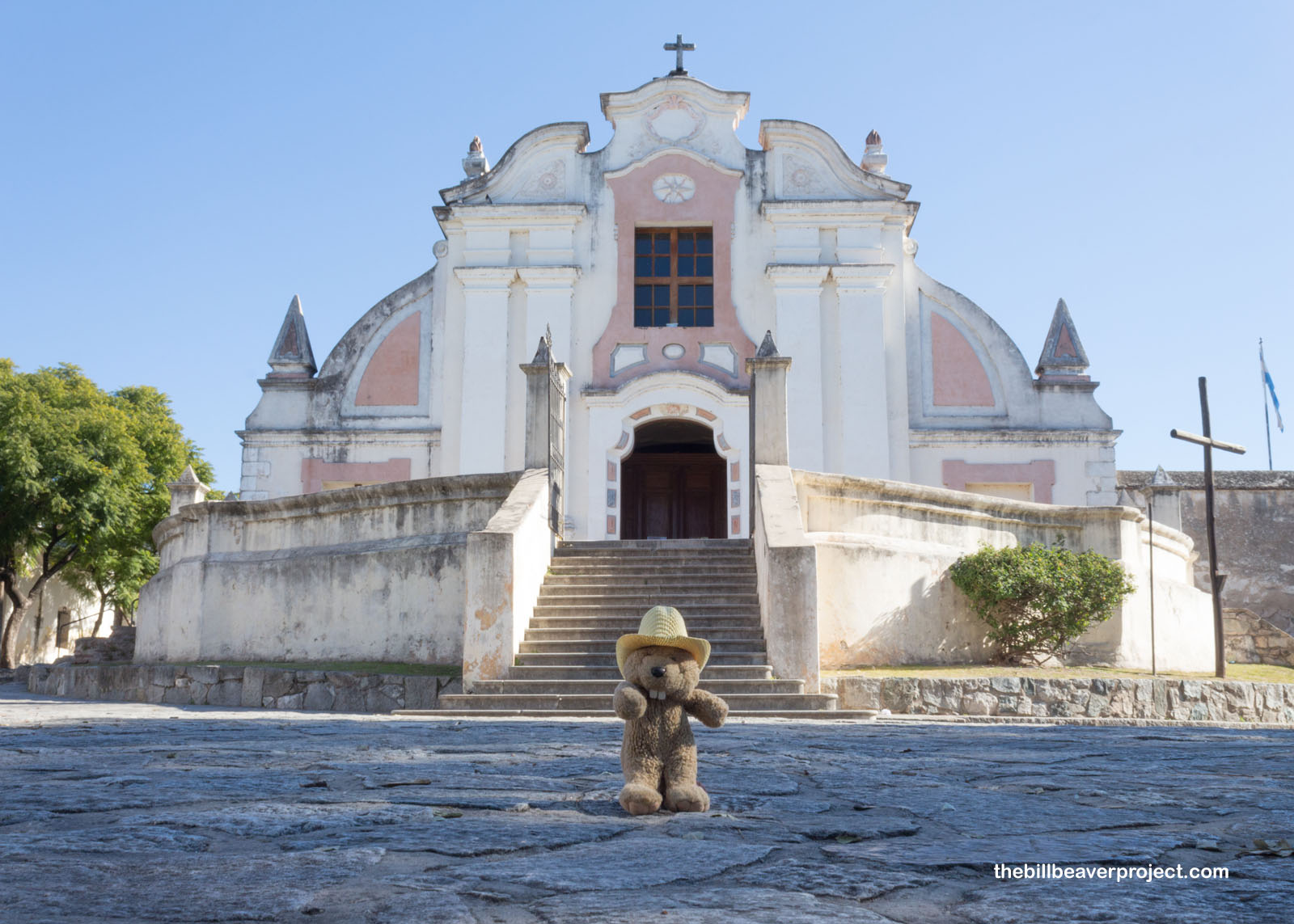 |
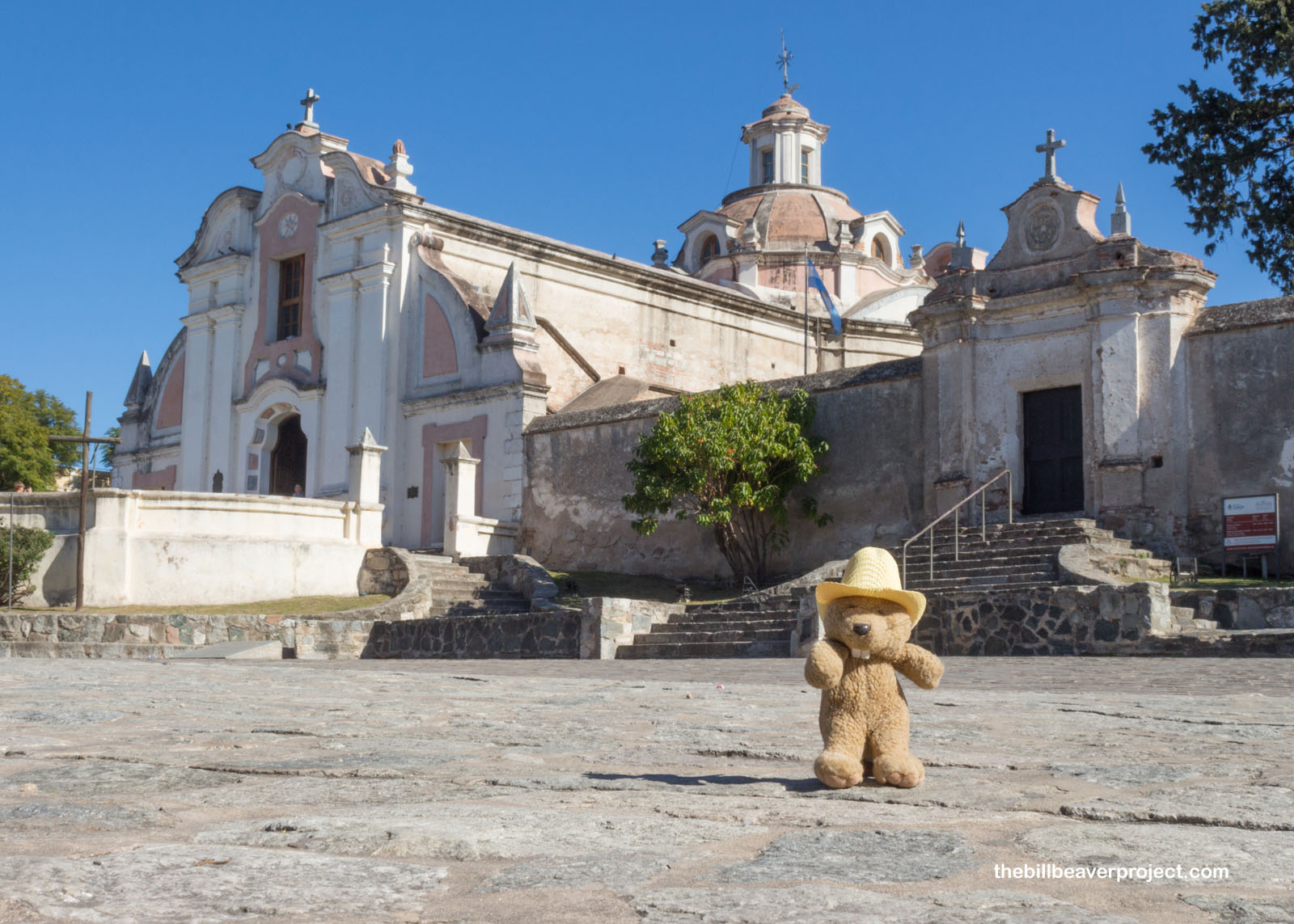 |
Here in Alta Gracia, the estancia consisted of this small church, the cattle ranch, mills for grain and textiles, and a lime kiln, or calera! It also featured an artificial lake, or dique, called the Tajamar! Dug out in 1659, the water from the Tajamar fueled the estancia’s mills, but today, it’s a quiet place to enjoy a cool winter’s day, watching ducks or renting a pedal boat for a turn about the lake!
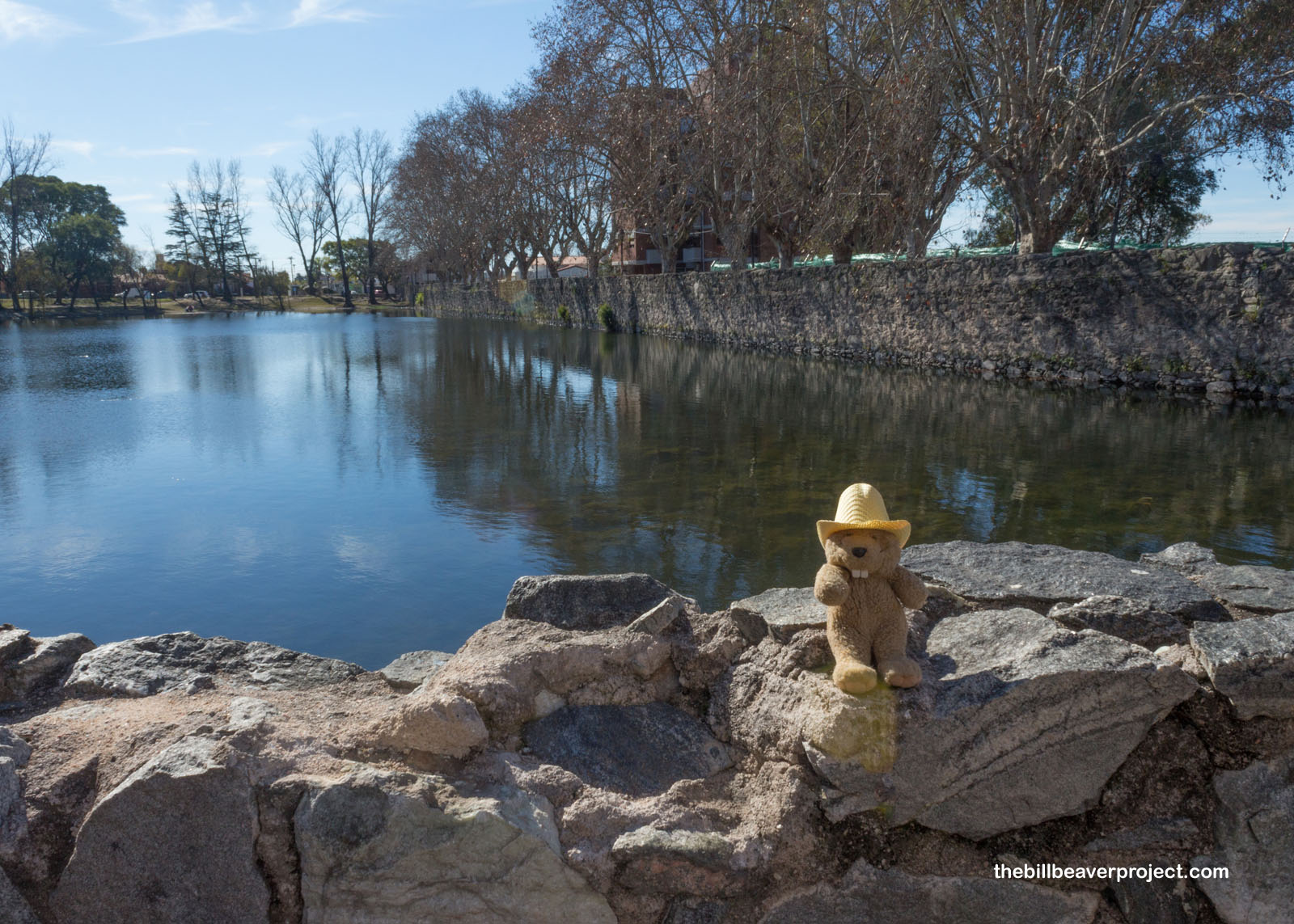 |
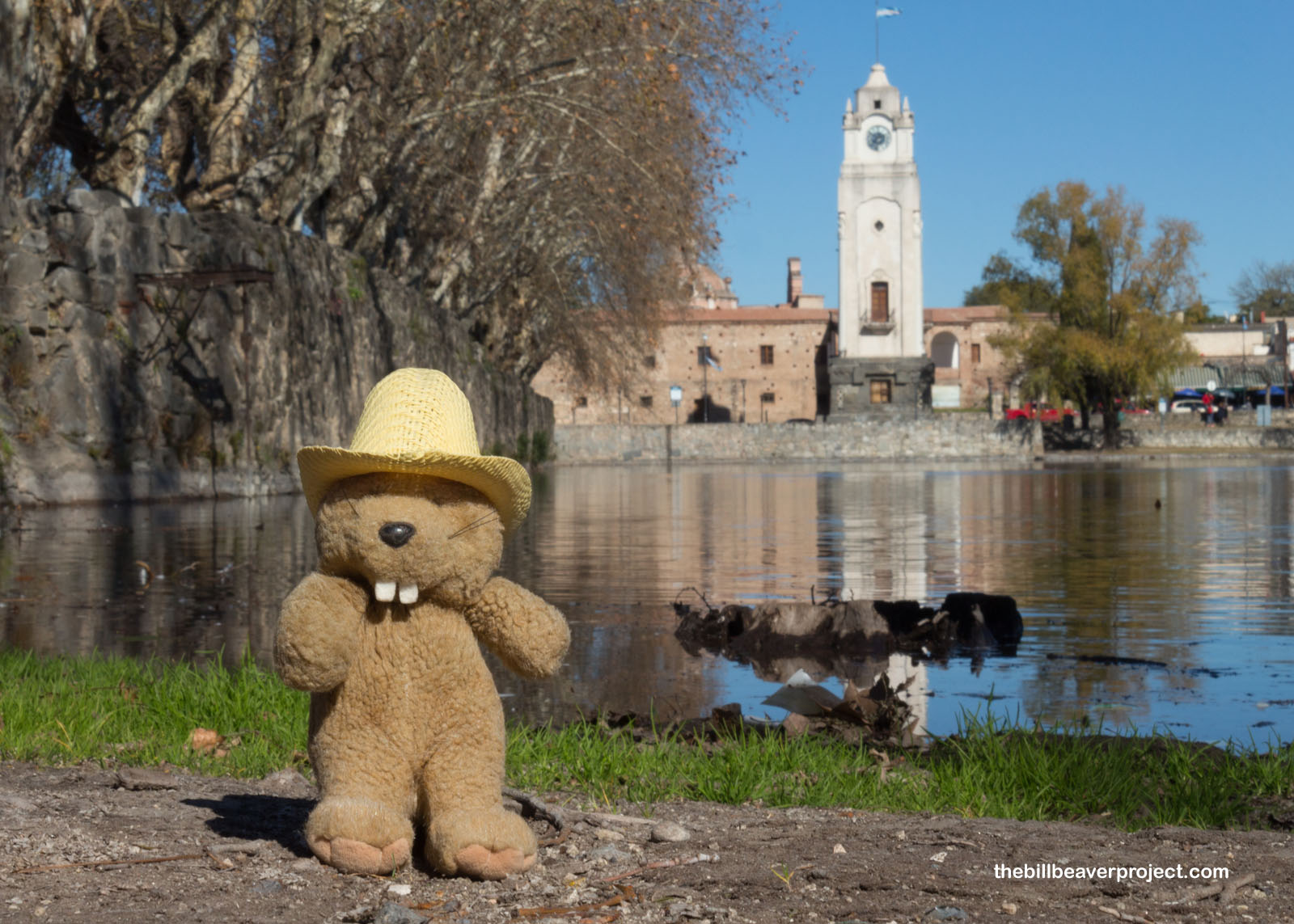 |
From across the lake, I also spotted a duo of parking attendants making their way slowly toward my rental car, so I hustled as quickly as I could to beat them and headed up into the hills to visit the home of Alta Gracia’s most famous resident: Ernesto “Che” Guevara, now a museum!
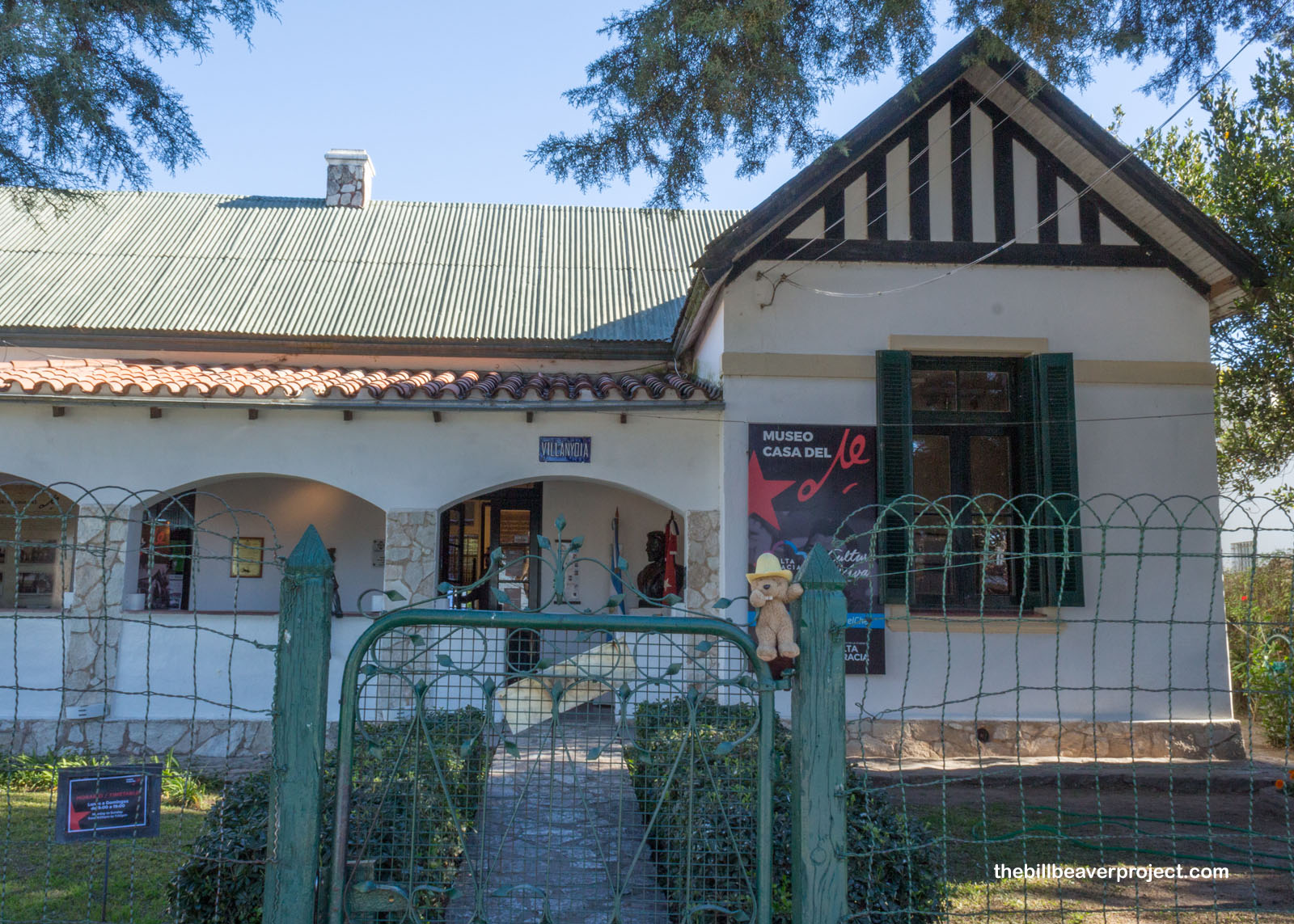 |
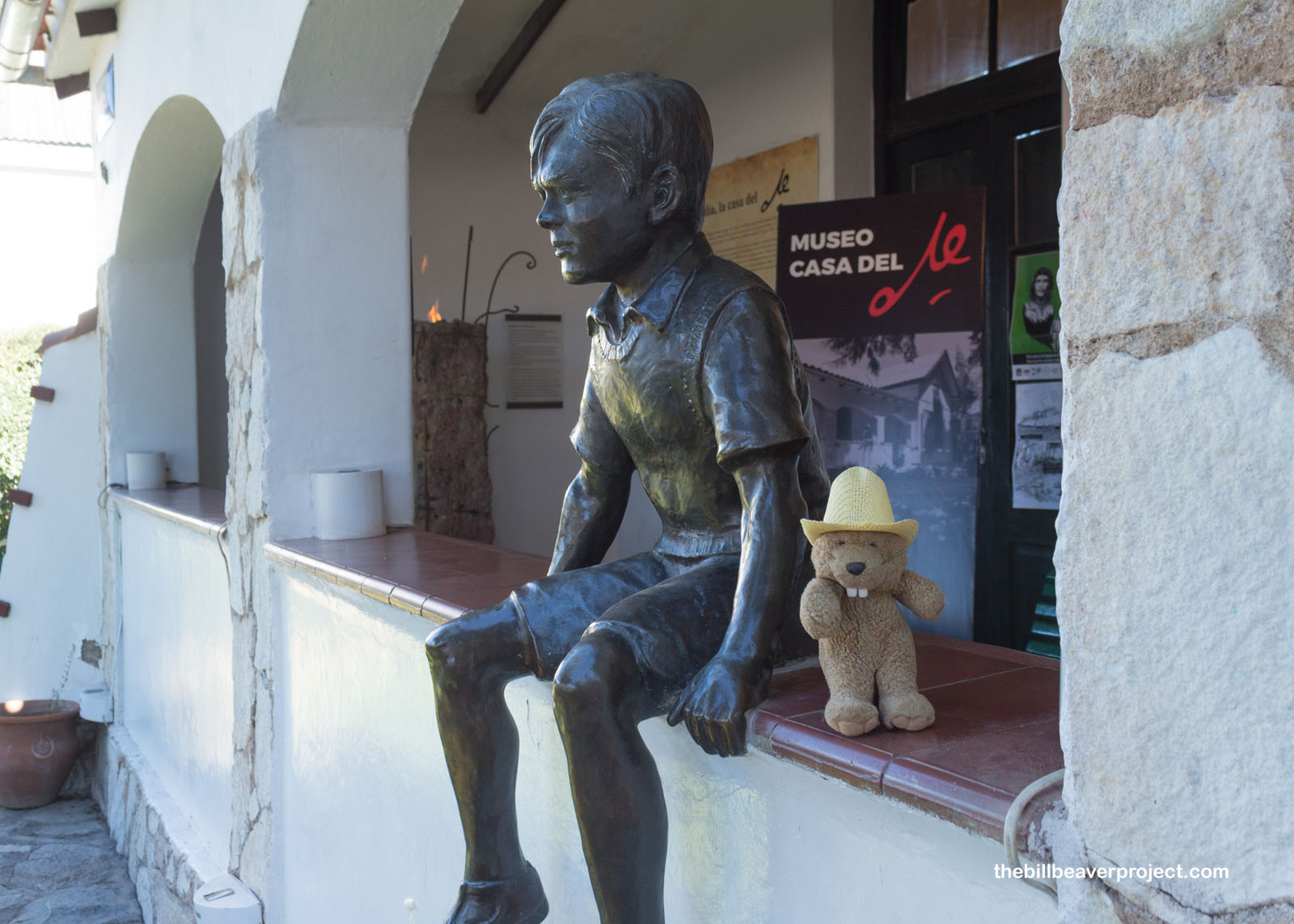 |
A doctor by trade, and resident of Alta Gracia for 12 years, “El Che” became a revolutionary after making two epic circuits of South America on a motorcycle, similar to one on display at the museum! The first journey in 1950 took him on a 2,800-mile solo trip through northern Argentina, and the second in 1951 spanned 5,000 miles with his friend, Alberto Granado. Along the way, he encountered extreme poverty but also a strong sense of community among the impoverished, which he wrote down in a book called The Motorcycle Diaries!
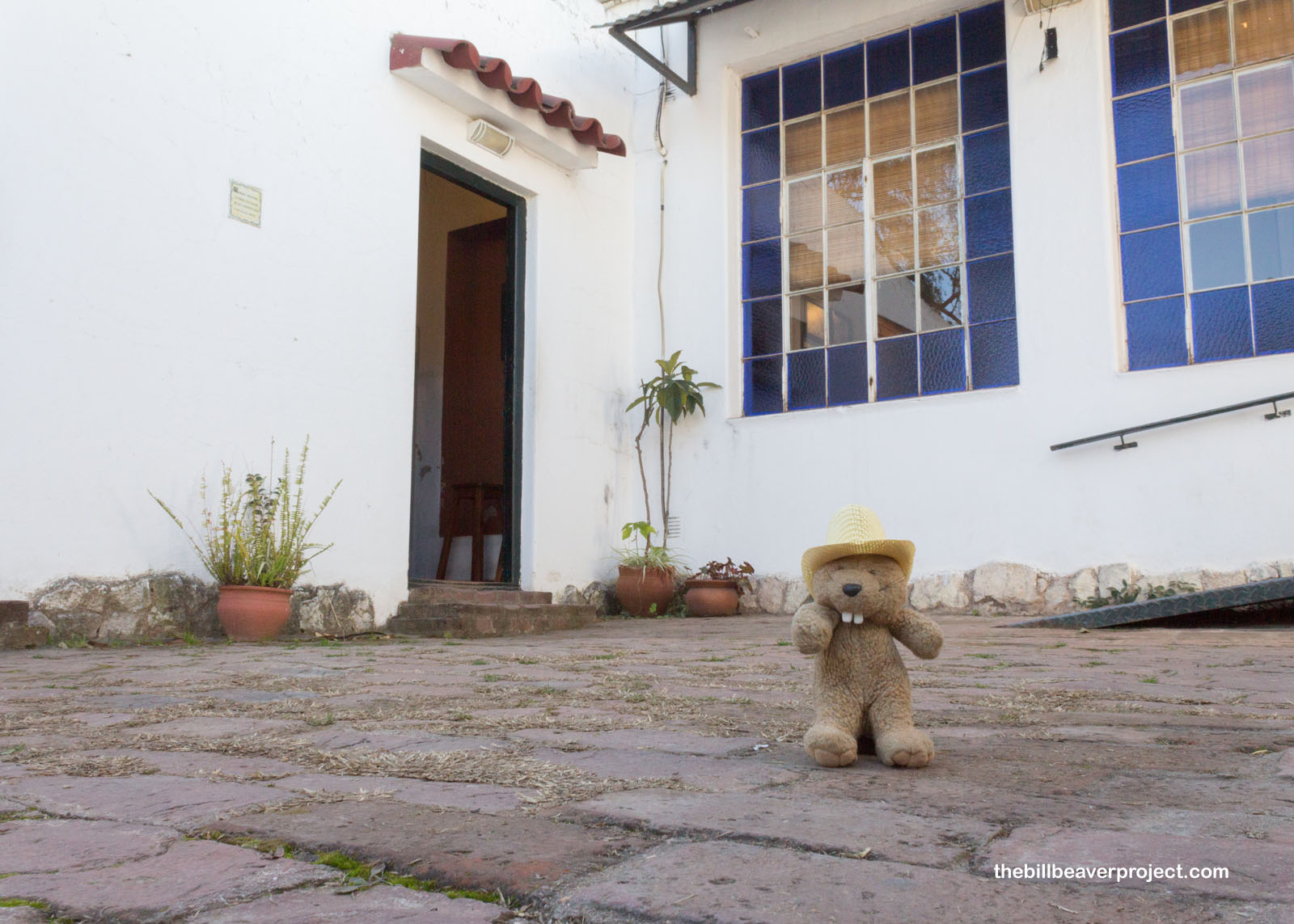 |
After the CIA deposed Guatemala’s President Jacobo Árbenz Guzmán and helped install the dictator, Casillo Armas, Dr. Guevara came to see the United States as an enemy, responsible for much of the poverty he saw on his adventures. While in Mexico City in 1955, he met Fidel and Raúl Castro and joined their overthrow of Cuban dictator, Fulgencio Batista! That revolution succeeded, and Dr. Guevara became an emissary to other countries, denouncing Western imperialism, Soviet moderation, and South African apartheid.
He eventually renounced his Cuban citizenship to support revolutions in Congo and Bolivia, where he was finally captured and executed by the Bolivian military. His hands and his diary were taken from his body, and the latter was widely translated and spread. He was a complex character, loved and hated, and the museum in Alta Gracia tells his story in the 10 rooms where he spent his childhood!
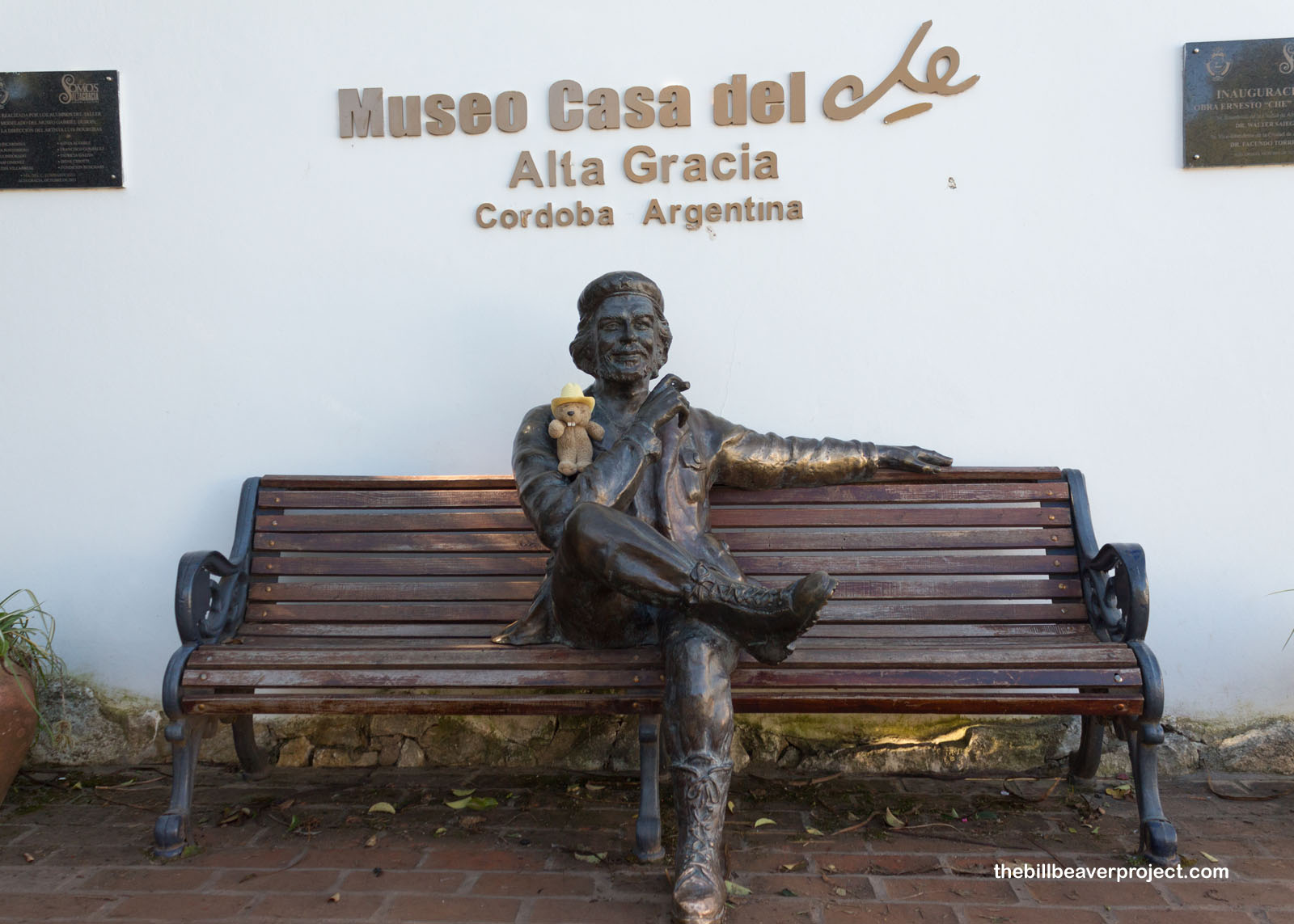 |
Though I didn’t have a motorcycle myself, I too had to cover some ground before it got too dark. Motoring north past the lakeside resort town of Villa Carlos Paz and the haunted “Nazi Hotel” in La Falda, I arrived in the Argentine Ojai, Capilla del Monte, home to the UFO Reporting Center, an annual Alien Festival, and the mythical subterranean city of ERKS! By the time I arrived, I didn’t have a whole lot of time to make a full tour of alien oddities, but I did want to see the famous rock formation called El Zapato!
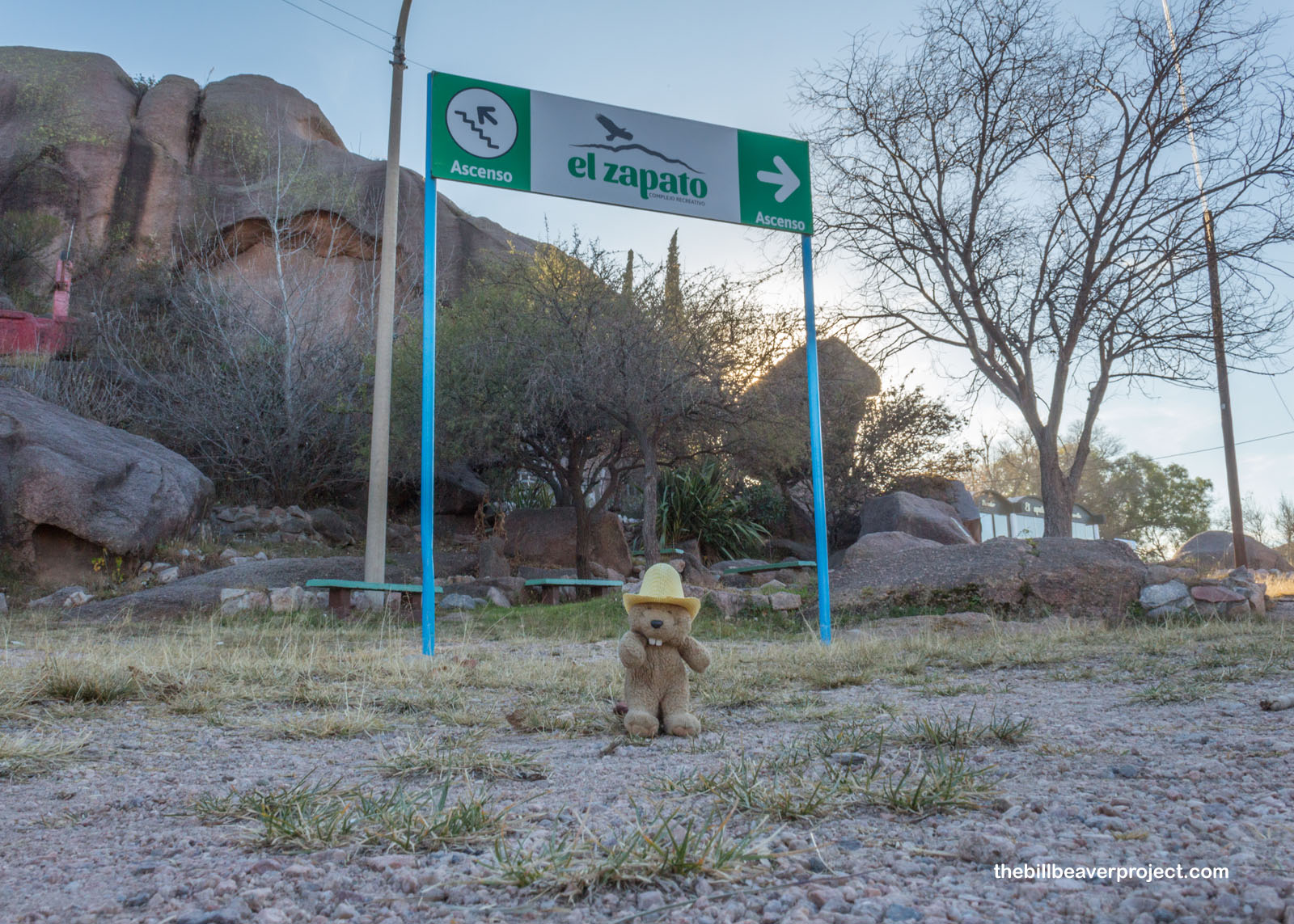 |
As you might expect, El Zapato is a shoe-shaped rock formation overlooking the valley and Cerro Uritorco, the beacon of UFO sightings! The legend of the Zapato is that the chiefs, shamans, and healers of all the surrounding tribes would come here to meditate, and of course, merchants had plenty of energy crystals for sale at its base!
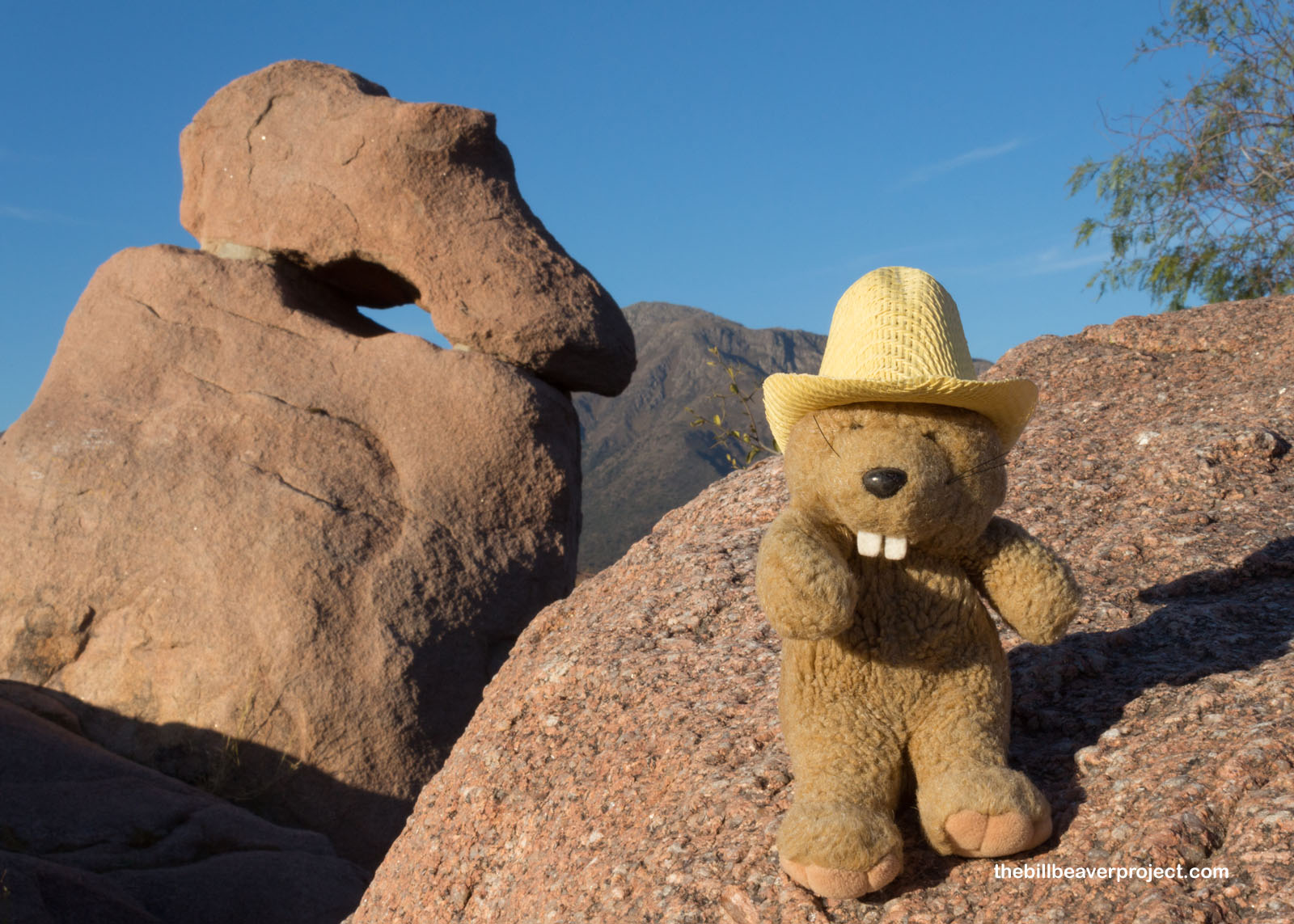 |
But night was falling, and since there were three hours of driving between me and the hotel, I hit the road. The sunset over the endless road was spectacular, and darkness fell gently as I crossed provincial lines from Córdoba into La Rioja, arriving at last in the village of Patquía, which the hotelera at Hotel Raquelito told me means “crossroads.”
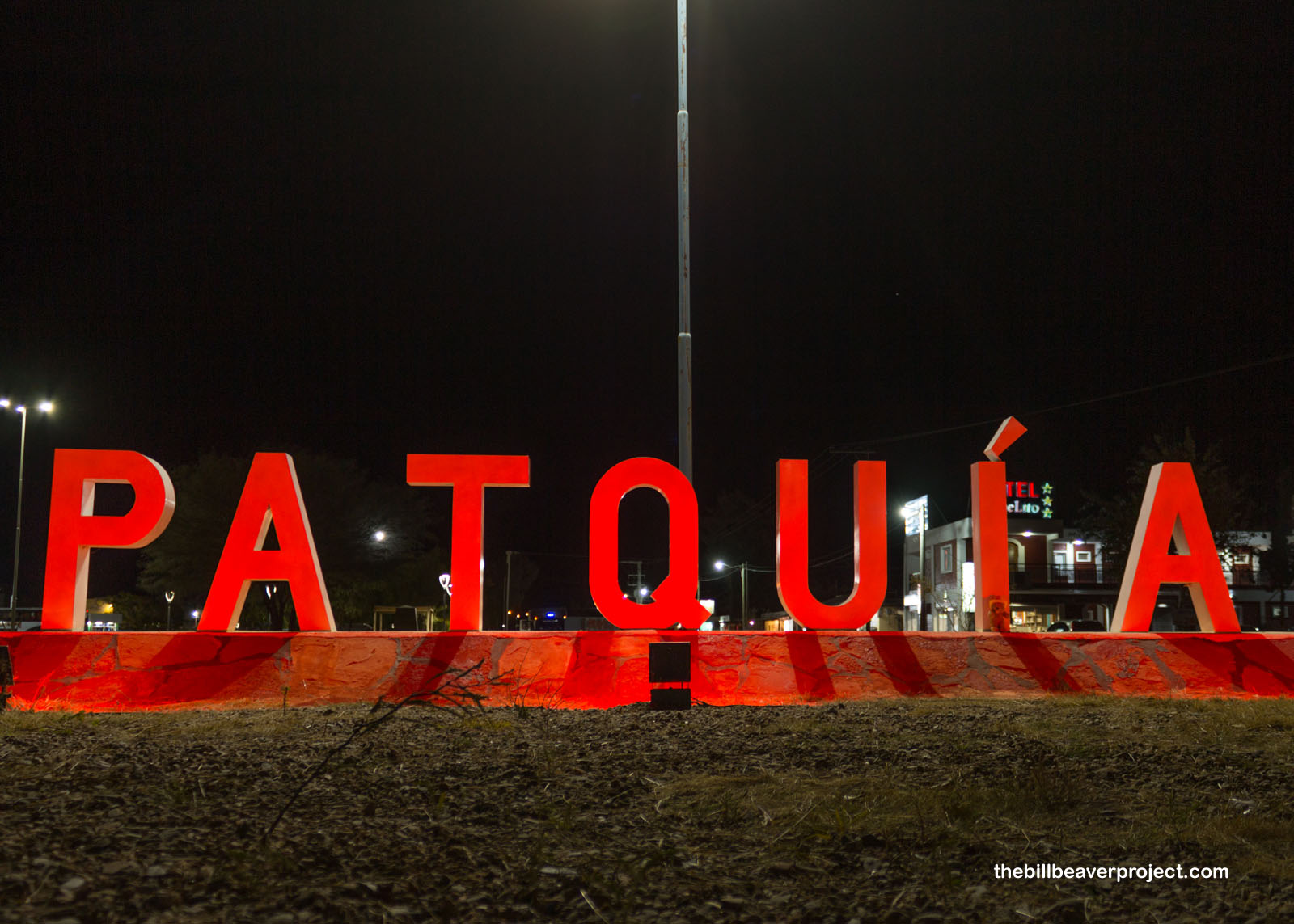 |
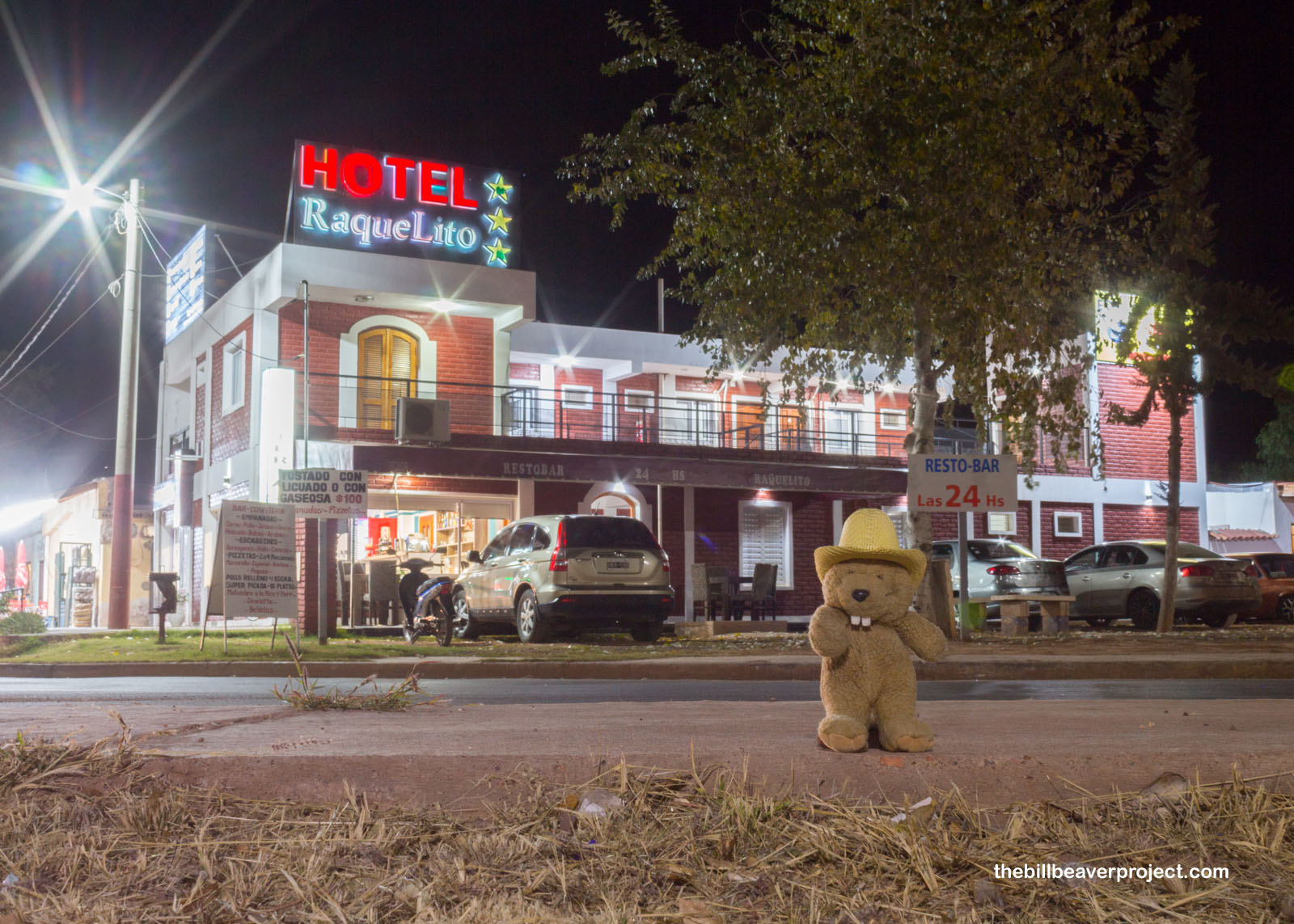 |
It was a little tough getting settled into the hotel. The food was cold at the 24-hour restaurant, and I had a hard time with the door lock and the heater, but once I did get settled in, I had a nice, quiet night ahead of me, which was great. I’ve got plenty more ground to cover tomorrow!
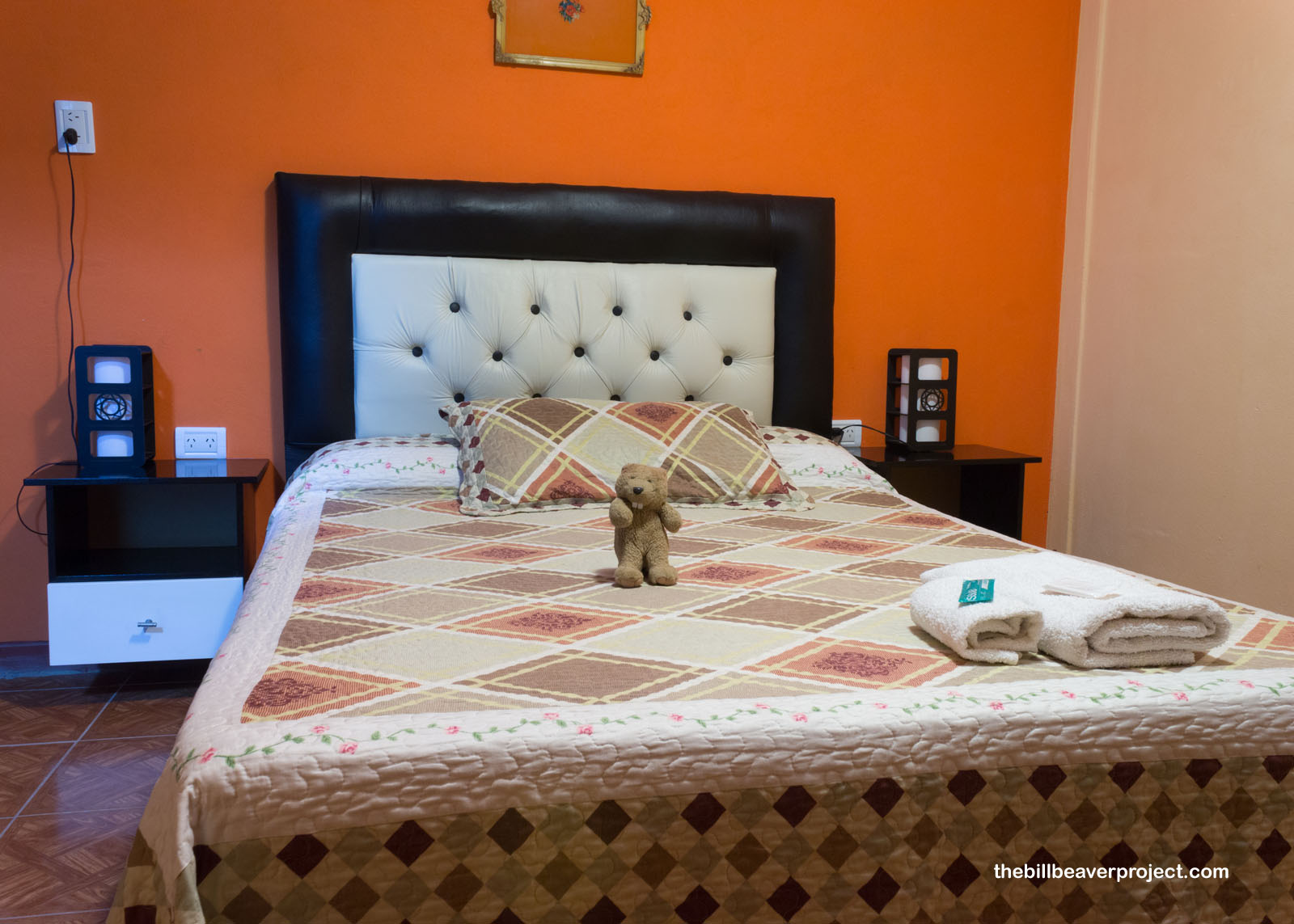 |
Beyond the eclipse, there’s another reason I wanted to drive way out here to the edge of the Andean rain shadow, and that’s to see a second UNESCO World Heritage site, home to one of the world’s most incredible Triassic fossil deposits! I’ll tell you all about it first thing in the morning!
¡Patquía later!

 More 2019 Adventures |
Total Ground Covered: 266.6 mi (429.0 km) |
 Next Day |
